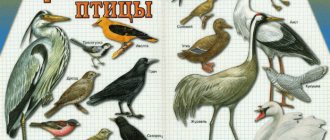Teaching preschool children to compose stories based on plot pictures
Valeria Fokina
Teaching preschool children how to compose stories based on plot pictures
Monologue speech is psychologically more complex than dialogic speech. It is more extensive, because it is necessary to introduce listeners to the circumstances of the events, to achieve their understanding , etc. d. A monologue requires better memory, more intense attention to the content and form of speech. At the same time, monologue speech is based on thinking that is logically more consistent than in the process of dialogue or conversation.
Monologue speech is also more complex linguistically. In order for it to be understandable to listeners, it must use complete, common sentences and the most accurate vocabulary.
The ability to narrate plays a big role in the communication process. For a child, this skill is also a means of cognition, a means of testing one’s knowledge, ideas, and assessments.
It is important that children feel joy and satisfaction from their stories and see their benefits.
In form, stories can be descriptive or plot .
Description is a statement of the characteristic features of a separate object or phenomenon. Usually the description is of a business nature, it contains many precise definitions and circumstances, but it is desirable that there are elements of imagery that attracts children . In addition, the description should be concise.
Looking at paintings in early childhood has a triple purpose:
1) exercise observation ability;
2) encouragement of intellectual processes accompanying observation (thinking, imagination, logical judgment)
;
3) development of the child’s language.
When conducting picture , you should be guided by the following basic principles:
1) The picture must be graphically literate and not distort any of its details.
2) But the content of the picture must psychologically correspond to the age of the child , and therefore the pictures should be offered to children in the appropriate sequence.
3) Looking at the picture can continue only as long as the child shows interest and attention.
4) The number of paintings introduced into children's lives must be pedagogically justified.
5) The cultivation of observation and conscious contemplation should by no means be limited to the use of paintings .
6) Lessons based on paintings achieve all the goals associated with them only with the active use of verbal communication by the teacher and children.
7) The picture shown to children is displayed on a board or easel against the light. The children sit opposite her in a semicircle. A special stick is required for display. Pointing fingers is not allowed.
 By participating in a game or activity, the teacher, by example and demonstration, stimulates children to the desired speech reactions.
By participating in a game or activity, the teacher, by example and demonstration, stimulates children to the desired speech reactions.
In the second younger group, the preparatory stage of learning to tell a story from a picture , since a three-year-old child cannot yet compose a coherent narrative . As a rule, children limit themselves to listing objects, their individual properties and actions.
At this stage, the main thing is to teach children to look at the picture , notice the most important thing in it and gradually move them from simply listing objects to coherent statements (answering the teacher’s questions)
.
The first paintings for younger preschoolers are paintings depicting individual objects (toys, household items, pets, as well as simple subjects the children’s personal experience (the “Our Tanya”
O. Solovyova,
“We are playing”
by E. Baturina, “
Paintings for the development of speech and expanding the ideas of children of the second and third kind of life” by E. Radina and V. Ezikeeva, etc.
You can ask a riddle. You can sing with your children a song they know about a cat, a dog, or a chicken.
In the second younger group, it is especially important to use a variety of gaming techniques. M. M. Konina suggests, for example, “ Let's tell the doll” , “What we will tell the dog” . With the help of the teacher, children are happy to tell stories from the picture about (dog, etc.) who came to visit them
Looking at an object picture can also be associated with looking at a similar toy . The teacher asks the children questions that consolidate their knowledge about this object. This technique encourages children to make new statements.
After the lesson, the painting remains in the group for several days. look at it again , notice something they didn’t notice before, and speak out. The teacher also leads this examination , clarifies the children’s , encouraging and supporting them.
In the middle group, it becomes possible to compose a small coherent narrative, since at this age speech improves and speech and mental activity increases
Children of middle preschool age are taught to compose mainly descriptive stories , both from subject and plot pictures .
Storytelling based on the picture is carried out according to the teacher’s questions and a sample story . At first, many children repeat the proposed model almost word for word, but gradually elements of creativity begin to appear stories
At the end of the year, if the children have learned to tell the story according to the model , the tasks can be complicated, leading preschoolers to independent storytelling . So, the teacher gives a sample story based on one picture , and the children tell the story based on another (for example, pictures from the “Our Tanya”
).
You can introduce storytelling according to plan . For example, based on the painting “Tanya and the Pigeons,”
the following plan is proposed:
tell us where Tanya is walking.
What is she doing? What is he playing? What can you see behind the fence? In the senior group and preparatory groups for school, due to the fact that children’s activity increases , speech improves, opportunities arise for independently composing stories from pictures . Higher demands are placed on children's stories of the plot , use of a variety of linguistic means. A sample story is given to senior and especially pre-school groups for generalized imitation, and not for simple reproduction. Literary samples are used. In some cases, it may be advisable to simply suggest to children a possible plot or outline the main stages of its development.
When working with older preschoolers , a series of plot paintings is widely used to compose stories with a beginning , climax, and denouement. The plots can be very different ( “How a Hedgehog Saved a Hedgehog”
,
“Teddy Bear on a Walk”,
etc.).
It is very important to teach children not only to see what is depicted in the picture , but also to imagine previous and subsequent events. In such cases, the teacher poses a number of questions that seem to outline a storyline that goes beyond the content of the picture . By coming up with a beginning or an ending to what is depicted, the child acquires the skills necessary for independent storytelling .
The same picture can be used several times during the year, but at the same time the teacher must set different tasks, gradually complicating them. When children are fluent enough in storytelling , they can be offered two or more paintings (familiar or completely new)
to
compose a story based on any of them to choose from (for example, pictures on the topic “Our site in winter and summer”
).
This gives each child the opportunity to choose the most interesting for him or the most accessible plot .
Children of senior preschool age must be taught to notice details in a picture : background, landscape, weather conditions , and to include descriptions of nature in their stories .
painting classes takes a central place, but at the same time it is very important to combine this task with other speech tasks: enriching and activating the vocabulary, forming the grammatical structure of speech. For example, various grammatical and lexical exercises can be included in conversations on the content of the picture . As a result of such exercises, children's stories will become more colorful , enriched with a variety of descriptions (seasons, weather, characters, etc.)
.
Using the method of visual modeling in work on the development of coherent speech in preschoolers with ODD (levels II-III) The formation of coherent speech in children with general speech underdevelopment is one of the most important tasks of speech therapy work with preschoolers.
Source




